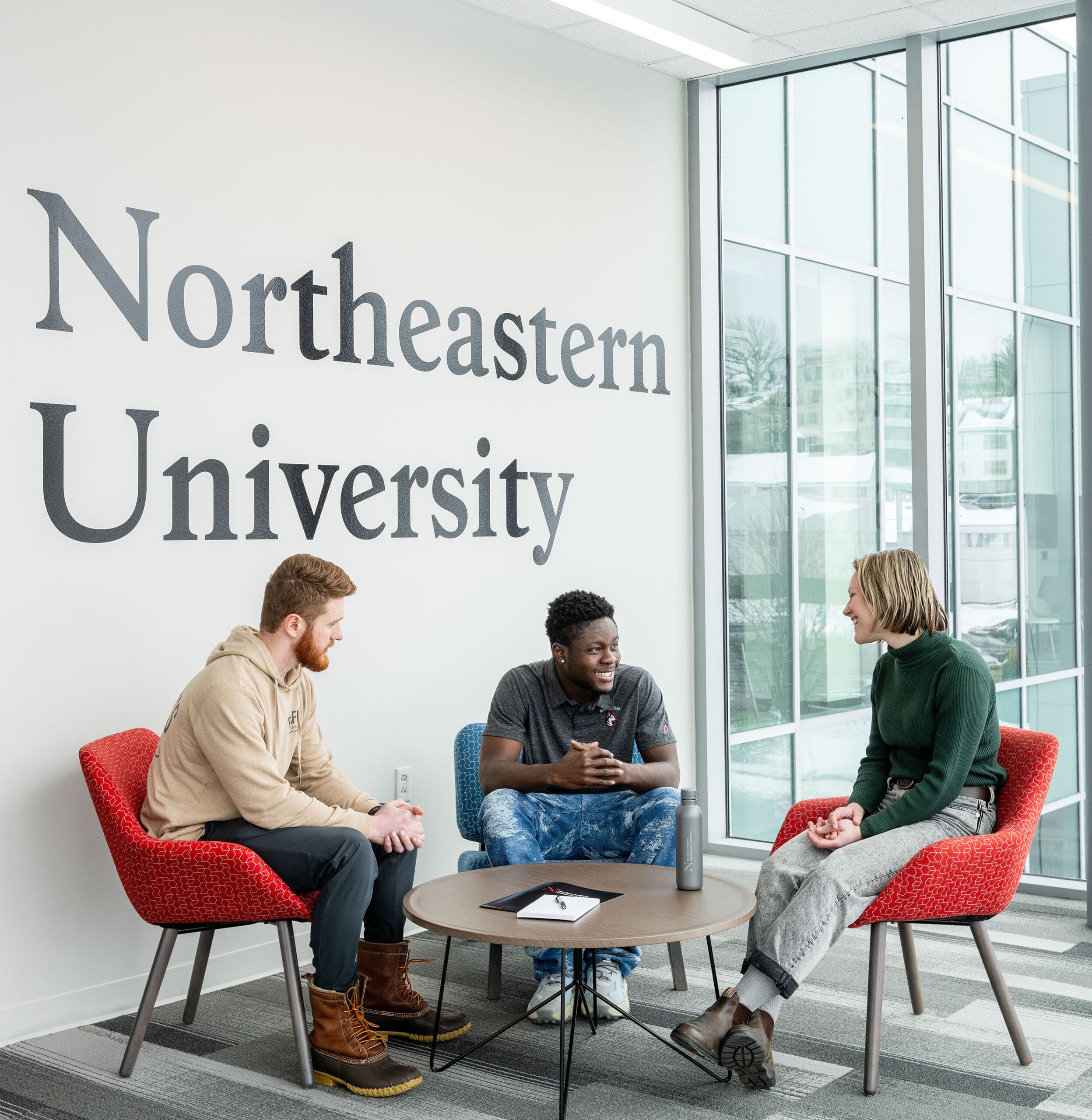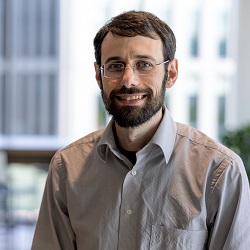Nathan Post
Research Associate Professor
Nathan Post is a research associate professor in engineering at the Roux Institute and has a joint appointment in civil and environmental engineering and mechanical and industrial engineering at Northeastern. Post’s research focuses on applying machine learning to understand and optimize physical processes and systems with applications in additive manufacturing, wind energy and reverse osmosis desalination technology. The AI technology being developed in the engineering group moves us closer to a circular economy and provides key insights and training to local businesses across a range of industries.
Prior to joining The Roux Institute, Post led the technology development at WindESCo, a Boston-based startup assisting wind plants to optimize the performance of their fleet and maximize renewable energy generation. Post’s work at WindESCo included developing a new sensor for monitoring wind turbine blade loads, leading an analytics team to develop machine learning algorithms that can identify causes of turbine underperformance and how to fix them, and developing the Swarm™ hardware and software technology for retrofitting existing wind farms to mitigate wake losses and increase energy production.
Post received earned his bachelor’s degree in mechanical engineering at Clarkson University and his master’s and PhD in engineering mechanics from Virginia Tech, where he studied fatigue of fiber reinforced polymer matrix composites. Following graduate school, Post worked working on full-scale structural testing of wind turbine blades at the Fraunhofer Institute for Wind Energy Systems in Bremerhaven, Germany and then at the National Renewable Energy Lab in Boulder and Boston where he developed novel biaxial resonance fatigue test methods prior to joining WindESCo.
Post serves as a technical advisor to the ReWind Network, an international collaboration with teams at GaTech, UCC, QUB, CUNY innovating technology for repurposing old wind turbine blades in civil infrastructure.
Post lives in the Nason’s Corner neighborhood of Portland and loves getting outside sailing, hiking, kayaking, skiing, and tending his young orchard of fruit trees.
Research Overview
The engineering research team at the Roux develops material and mechanical experimental mechanics methods, analyses experimental data, and builds and trains algorithms to provide feedback to manufacturing and control processes. Applications include understanding the process to material property relationship in 3D metal printing, characterizing the mechanics of novel hydrogels, optimizing wake steering on wind plants, and mitigating fouling of reverse osmosis desalination membranes.
Areas of Expertise
- Experimental Mechanics
- Data Analysis and Uncertainty Estimation
- Applying Machine Learning to Understand Physical Phenomena and Systems
Publications
- Post N, Buerkner F. “Fatigue Test Design: Scenarios for Biaxial Fatigue Testing of a 60-Meter Wind Turbine Blade.” National Renewable Energy Laboratory, NREL/TP-5000-65227, 2016 July Revised August 2019. https://www.nrel.gov/docs/fy16osti/65227.pdf
- Post NL, Case SW, Lesko JJ. “Modeling the variable amplitude fatigue of composite materials: A review and evaluation of the state of the art for spectrum loading.” International Journal of Fatigue. 2008; 30:2064-2086. DOI: 10.1016/j.ijfatigue.2008.07.002
- Post NL, Riebel F, Zhou A, Keller T, Case SW, Lesko JJ. “Investigation of 3D Moisture Diffusion Coefficients and Damage in a Pultruded E-glass/Polyester Structural Composite. Journal of Composite Materials.” 2009; 43(01):75-96. DOI: 10.1177/0021998308098152
- Post NL, Lesko JJ, Case SW. “Fatigue durability of E-glass composites under variable amplitude loading: the importance of load sequence.” Scientific Proceedings of the European Wind Energy Conference. pp. 152-158, 2008.
- Post N, Cain J, McDonald K, Case S, Lesko J. “Residual strength prediction of composite materials: Random spectrum loading.” Engineering Fracture Mechanics. 2008 June 01; 75(9):2707-2724.
- Read more on Google Scholar
Related Links

